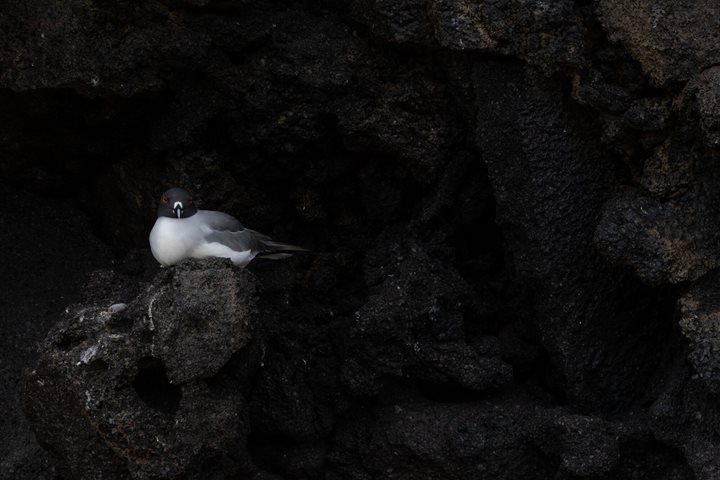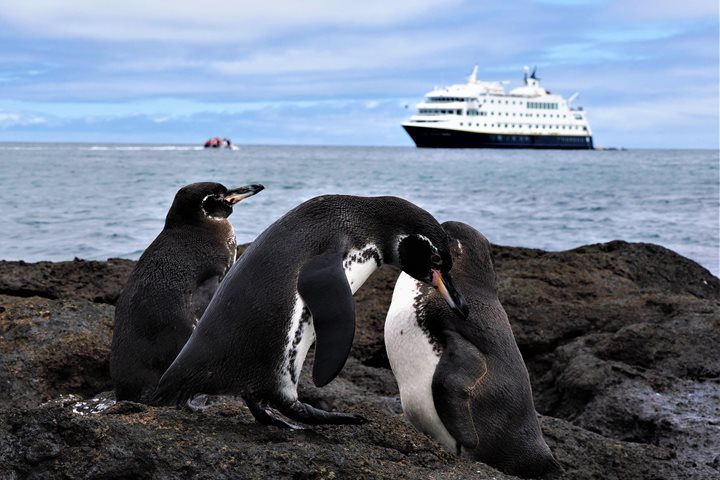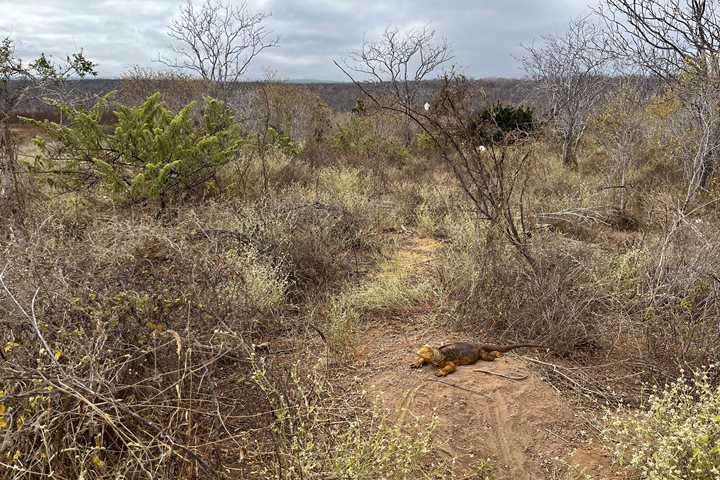Today we are on Santa Cruz Island, right in the center of the archipelago, the heart of the Galapagos Islands. This area is perhaps the most humid and habitable part of the region, therefore it has developed the largest human population, with around fifteen thousand inhabitants. It is the economical center, and also home for the headquarters of the Charles Darwin Station and the Galapagos National Park Service.
The National Geographic Endeavour spent the night moored in Academy Bay, and early this morning we all disembarked to visit the Darwin Research Center, which right now is going through a mayor reconstruction, but still we can visit the Tortoise Breeding Center.
Right now the islands are quite humid, and last night it rained. The tropical rains have finally arrived to the island, which is good for tortoises, as the rain brings lots of green leaves, and they are vegetarians of course.
This is one of the four inhabited islands of the archipelago. Most of its land is national park, but there are farming areas, a few villages and the biggest town, Puerto Ayora. People cannot move freely into the national park, however tortoises can, and they can also spread through all vegetation zones at their will, just as their ancestors have done for centuries.
We learned about the successful stories of the breeding program for the giant tortoises while visiting the National Park headquarters in the morning; later we walked through the lovely town, so alive with people and so different from what we have experienced so far on this expedition. Options were available for everybody, like visiting a sugar cane farm or a local school, to see what life is like for the children of the Galapagos. The last and most important activity was to visit the tortoises in their natural habitat. Now that the rainy season has begun; the terrain is muddy, making it uncomfortable for us to walk, but this is a blessing for this great giants. We saw many tortoises in the wild, walking freely in the highlands.
Back onboard in the evening, we invited musicians to play the music of the Galapagos for our guests. It was an excellent way to finish the day on an island with a unique human history, by listening to its inhabitants express themselves so beautifully through art and music.







